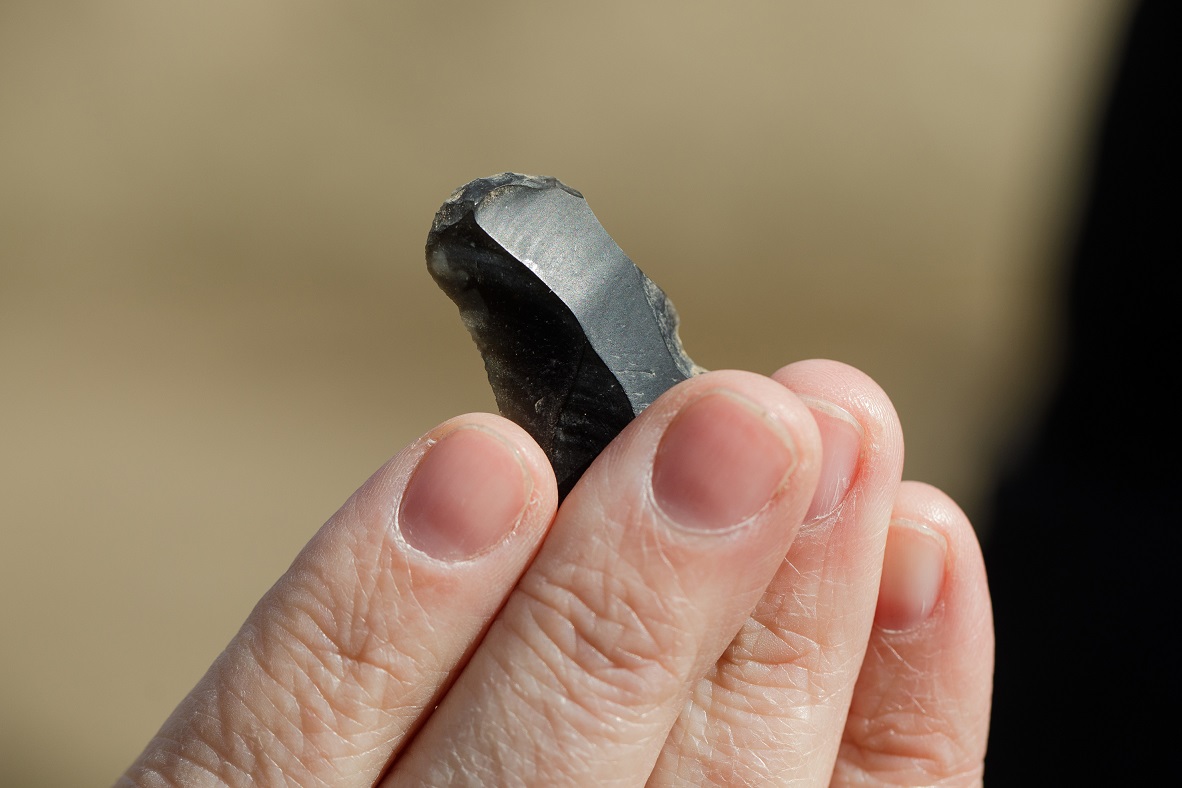As the scheduled construction works for the Gas Interconnection Poland–Lithuania (GIPL) proceed, archaeological research along the planned pipeline route has begun in parallel. For the Lithuanian archaeologists, this is one of the largest projects in recent years.
The work along the gas pipeline route is being carried out by a team of archaeologists from the Lithuanian Institute of History, Klaipėda University, Vilnius University, and the companies Kultūros Paveldo Išsaugojimo Pajėgos and Kultūros Vertybių Paieška. The team is being headed by Prof. Albinas Kuncevičius, who is the head of the Department of Archaeology at the Vilnius University Faculty of History. Prof. Kuncevičius says that in building the gas pipeline, archaeological heritage will be preserved: historical finds will be scientifically investigated and recorded in scientific sources, and the information will be passed on to future generations.
“This will be the first time in the history of Lithuania that, in carrying out a large-scale construction project, the top layer of soil will be moved aside before excavating the pipeline trench a couple of metres into the ground. This means that we will walk side by side with the gas pipeline contractors over the route and see what new archaeological monuments unfold. For the first time, we will have an archaeological section that will allow us to gather more information about historical times, human life and vegetation. This is standard practice in Western European countries,” said Prof. Kuncevičius.
According to acting CEO of Amber Grid Nemunas Biknius, by coordinating actions, the gas pipeline construction and archaeological research will create added value – not only will the gas interconnection with Western Europe be built, but a large part of Lithuania will also be explored using various archaeological research methods.
“We are proud that not only a new energy bridge between Lithuania and Poland will be build, it will also allow us to contribute to the study of Lithuania’s historical heritage. During construction of the gas interconnection, comprehensive archaeological research will be conducted over an area of almost 9,000 square metres, while an archaeological survey will be carried out over the entire area of the gas pipeline route, which covers close to 200 hectares of land. Together, we are all contributing to our knowledge of the country’s historical heritage,” says Mr Biknius.
Teams of archaeologists have already conducted archaeological surveys, checking the terrain of the future pipeline route, crossing over the area with a metal detector, and taking pictures of the selected areas with drones. According to Prof. Kuncevičius, the second stage of work is now being prepared for. There are several areas of importance along the GIPL route, which is spread out over almost half of Lithuania.
“Along the path of the future gas pipeline from Širvintos to Lazdijai, we are singling out three places that are extremely valuable from an archaeological point of view – the Kernavė area, the Kruonis region, and Punia in the district of Alytus. We are hoping to discover finds here from the Mesolithic period of the Stone Age and 1st-4th century AD settlements. The GIPL route was selected in such a way as to avoid already known archaeological sites, so efforts will be made to investigate previously unknown archaeological monuments without interrupting construction of the gas pipeline,” said Prof. Kuncevičius.
Two-thirds, or 100 km, of the Lithuanian side of the GIPL are planned to be constructed by the end of 2020. In the three months since construction began, 62 km of steel pipes were brought in to Lithuania from Poland, 40 km of pipes were welded, and 20 km of forest were prepared for the construction of the pipeline. The length of the gas interconnection route in Lithuania is 165 km. Currently, work for explosion testing is also being carried out along the pipeline route, and the extremely complex horizontal directional drilling is planned for summer for laying the pipeline under Lithuania’s largest rivers, the Neris and the Nemunas.
Once the gas interconnection is completed in late 2021, capacity will be created to transport up to 27 terawatt-hours (TWh) of gas per year to the Baltic States, and up to 21 TWh per year to Poland, and the Baltic gas markets will become part of the single EU gas market.







